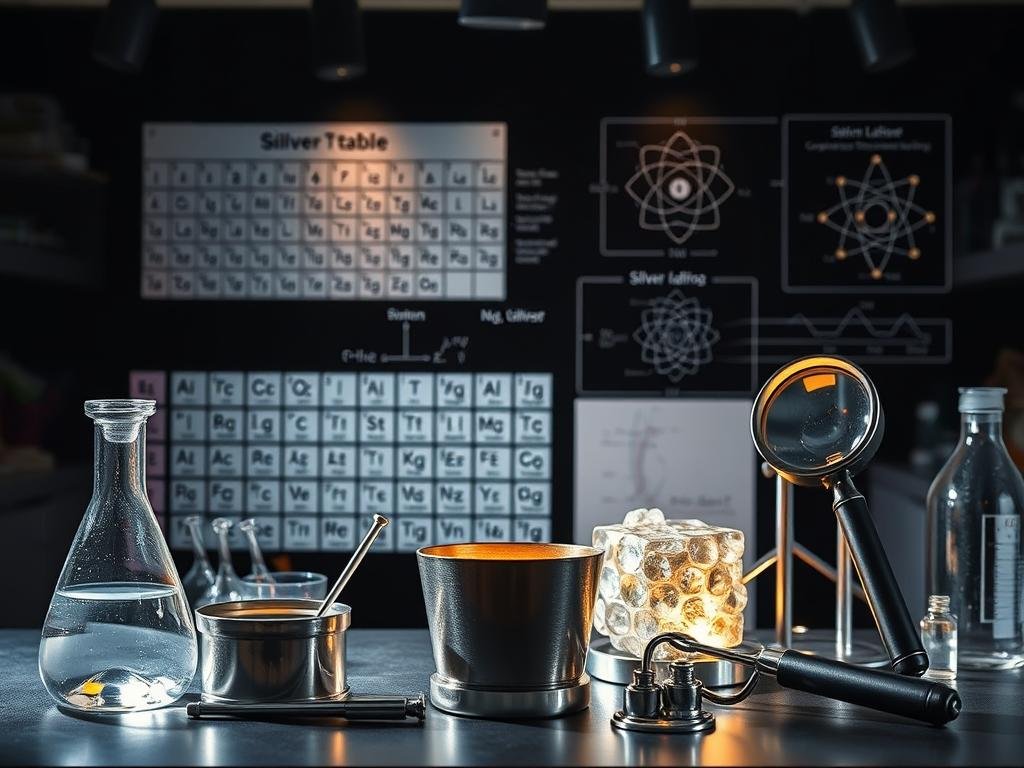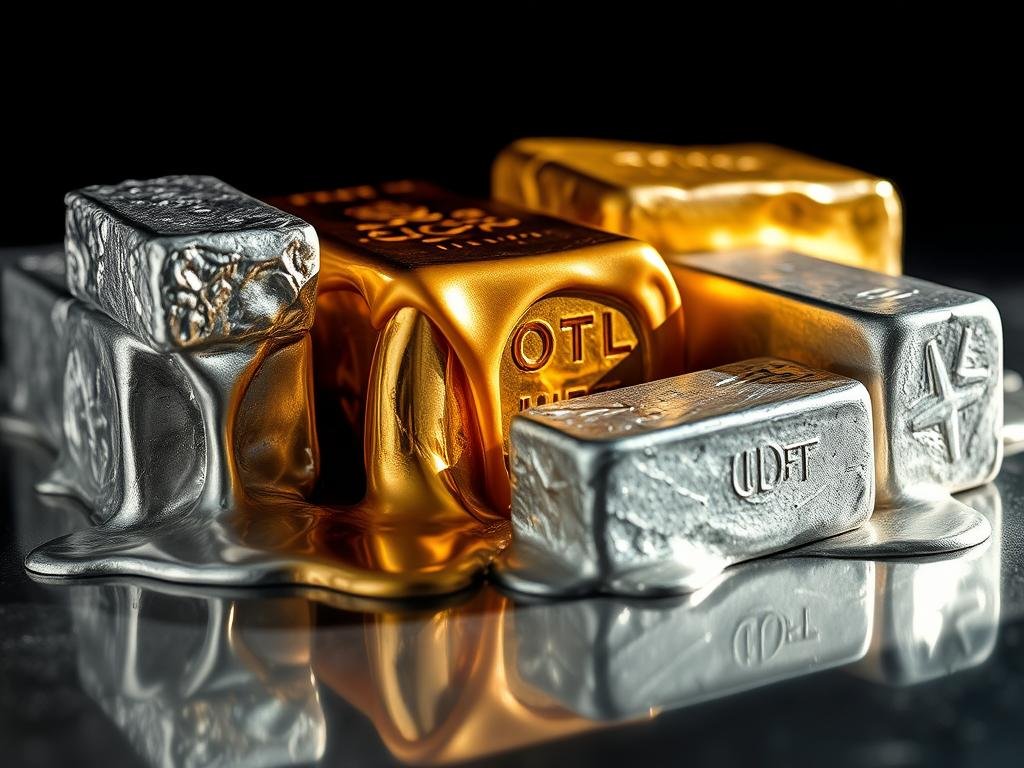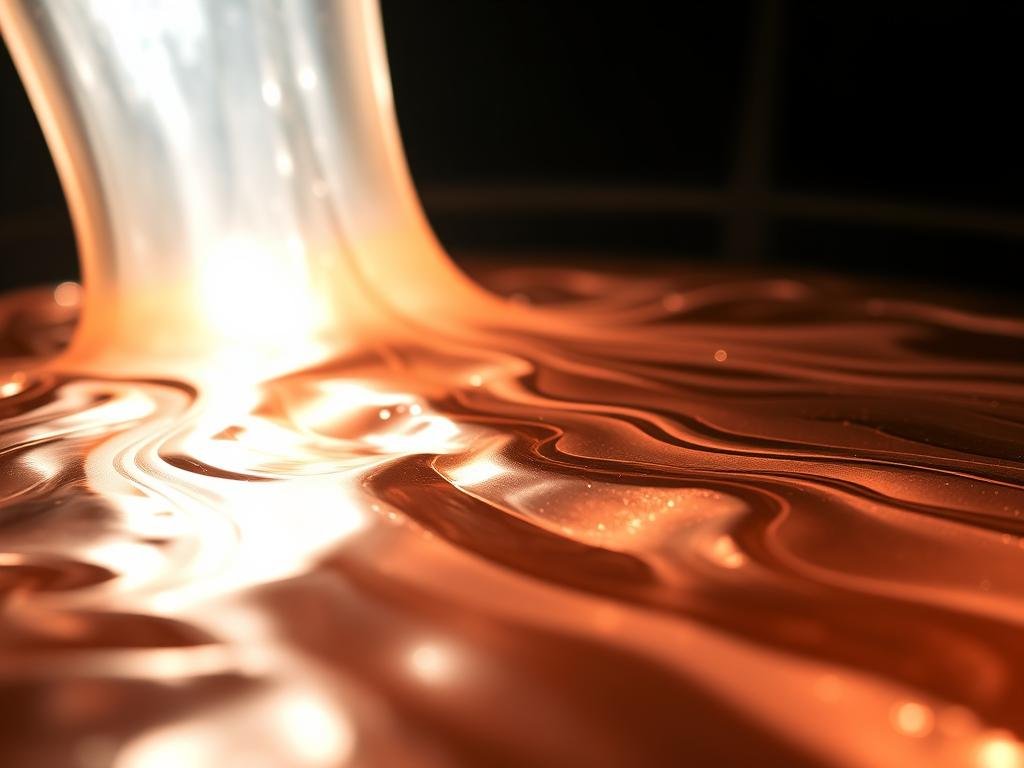More than 80% of precision engineers check a material’s fusion temperature before finalizing a design — a simple stat that shapes many production choices.
At 961.8°C (1,763.2°F), silver reaches its melting point, while its boiling value sits at 2,162°C (3,924°F). This exact temperature matters for alloy selection, casting accuracy, and thermal planning in electronics and jewelry.
Understanding this temperature helps teams control dimensional stability, cycle times, and cost across metals and gold comparisons. Key factors that shift the value include purity, alloying, crystal defects, and pressure.
Rapidaccu brings over 15 years of CNC machining experience to turn these numbers into real outcomes. From prototype castings to mass production, their process guidance links temperature data to tighter tolerances and superior surface finish for demanding applications.
Silver’s melting point at a glance and why it matters in precision manufacturing
Accurate thermal targets reduce scrap and improve finish in high-precision manufacturing. A clear reference at 961.8°C (1,763.2°F) helps define furnace setpoints, soak times, and heat input profiles for casting and pre-machining.
That wide gap to boiling at 2,162°C (3,924°F) gives a stable liquid window. Process engineers can then balance dwell time and heat to limit oxidation and control flow during pours.
- Preheating molds and choosing crucibles rely on accurate temperature data to reduce thermal shock.
- Compared with gold and copper, this value guides energy budgeting for mixed-metal workflows.
- Managing heat around this benchmark improves dimensional stability, lowering stock removal in CNC runs.
| Property | Value | Manufacturing impact |
|---|---|---|
| Melting | 961.8°C / 1,763.2°F | Sets furnace setpoints, soak time |
| Boiling | 2,162°C / 3,924°F | Large liquid window; thermal stability |
| Benchmark metals | Gold: 1,064°C; Copper: 1,084°C | Energy and equipment comparisons |
Rapidaccu’s 15+ years in CNC plastic and metal machining turn these values into practical plans. We map thermal data to fixturing, feeds, and finish control so prototypes scale to production with tight tolerances.
whats is the silver metal melting point
A precise temperature value guides casting, annealing, and machining decisions across jewelry and electronics.
Pure silver transitions to liquid at 961.8°C (1,763.2°F), which equals 1234.93 K. This exact reference—often written as melting point 961.8—serves as the baseline for specifications, furnace setpoints, and quality checks.
Exact values and practical notes
Use 961.8°C and 1234.93 K when calibrating thermocouples or reporting test data. Rapidaccu uses this value to align thermal planning and machining steps so parts meet tight tolerances and consistent finishes.
Boiling context and process margin
The boiling value sits at 2,162°C (3,924°F), leaving a broad liquid window. That gap lets foundries control flow without nearing vapor conditions, reducing splatter and unwanted oxidation.
- Definitive melting temperature: 961.8°C / 1234.93 K for pure silver.
- Wide liquid range to 2,162°C improves casting stability and safety margins.
- Face-centered cubic structure and high conductivity support clean fluidity during pours and predictable behavior during annealing.
| Property | Value | Why it matters |
|---|---|---|
| Melting | 961.8°C / 1234.93 K | Calibrates furnaces, drawings, and QA checks |
| Boiling | 2,162°C | Gives process margin for liquid handling |
| Crystal | FCC | Predictable wetting and flow during casting |
For a concise reference on industry values, see this guide on the melting point of silver.
Key factors that influence the melting temperature of silver
Small changes in composition and process can shift a material’s melt behavior and alter downstream machining plans.

Purity and alloying effects
Purity strongly affects the melting temperature. Even minor alloying adds new phases or eutectics that lower thresholds and change flow in molds.
Atomic structure and bonding
Silver’s face-centered cubic structure and metallic bonding set how atoms break free into liquid. High electron mobility speeds energy transfer to the melting front.
Pressure, environment, and heating
Atmosphere and pressure change thermodynamic equilibria. Inert gas reduces oxidation, while heating rate and thermal gradients create local superheating or underheating zones.
Microstructure, isotopes, and scale
Crystal defects, grain size, and isotopic mix affect how heat spreads. Finer grains give a more uniform onset, and contaminants alter wetting and dross formation.
| Factor | Effect on melting | Rapidaccu action |
|---|---|---|
| Purity / alloying | Lowered threshold; new liquidus ranges | Adjust thermal cycles and flux selection |
| Structure / atoms | Controls energy transfer and fluidity | Set ramp rates and soak times |
| Environment / heating | Oxidation, pressure shifts, gradient effects | Use inert atmospheres and controlled ramps |
From pure silver to sterling: how alloys change melting behavior
Different grades and alloys shift thermal behavior and affect casting, joining, and finish. Picking the right alloy helps control flow, strength, and final appearance for jewelry and precision parts.
Fine silver (999)
Fine silver melts at 961.8°C (1,763.2°F). Use this grade when conductivity and corrosion resistance matter most.
Sterling silver (925)
Sterling silver drops to about 893°C (1,640°F) because of copper additions. That lower melting reduces cost and boosts strength for wearable items.
Britannia and Argentium
Britannia (958) melts near 940°C (1,724°F). Argentium (935) sits around 930°C (1,706°F). Both offer better tarnish resistance and changed casting behavior compared with pure silver.
Silver solders
Silver solders with roughly 15% Ag fuse between 600–650°C (1,112–1,202°F). They provide a lower melting point joining method that protects parent parts during assembly.
| Alloy | Nominal composition | Melting value | Practical note |
|---|---|---|---|
| Fine silver (999) | 99.9% Ag | 961.8°C / 1,763.2°F | Max conductivity; needs higher heat input |
| Sterling silver (925) | 92.5% Ag, Cu blend | ~893°C / 1,640°F | Stronger for jewelry; lower melting |
| Britannia (958) | 95.8% Ag | ~940°C / 1,724°F | Good flow; improved finish |
| Argentium (935) | 93.5% Ag, Ge additions | ~930°C / 1,706°F | Tarnish resistant; stable casting |
These alloys shift solidus and liquidus ranges. Rapidaccu supports alloy selection to balance conductivity, machinability, and cost. We machine cast forms and sterling components to precise cosmetic and dimensional targets.
Melting vs. smelting: processes, equipment, and safety for molten silver
Working with molten alloys demands strict process steps and clear equipment choices to protect people and parts.
Melting silver means heating feedstock above its melt temperature in a crucible or furnace, then pouring into preheated molds and allowing full cool-down. Typical steps: prepare workspace, preheat crucible, controlled heat, pour, and cool before handling.
Smelting differs. It refines ores or mixed alloys by adding fluxes and forming slag that captures impurities. That slag must be removed for clean castings and higher purity feedstock.
Equipment and capabilities
Options include torches for small fixes, electric furnaces for steady soaks, and induction systems for rapid, controlled melts. Induction can melt small batches in ~10 minutes; larger furnaces handle multi-kilogram volumes with consistent soak times.
Safety essentials and legal notes
Wear full PPE: goggles, gloves, apron, and face shield. Ensure strong ventilation and clear all flammables since surfaces and dust ignite above 300°C. Monitor temperatures to stay well above melt point but far below the boiling point to reduce splatter and vapor risk.
Check local law before processing silver coins or bullion. Some jurisdictions restrict altering currency; always verify legality before proceeding.
| Process | Primary purpose | Typical equipment |
|---|---|---|
| Melting | Form casting feedstock for molds and preforms | Crucible, furnace, induction, torch |
| Smelting | Refine and remove impurities via slag | Furnace, flux, skimming tools, crucible |
| Heat control | Maintain margin above melt and below boiling | Thermocouples, pyrometers, controlled power units |
| Safety | Prevent burns, fires, and toxic exposure | PPE, ventilation, fire suppression, clean workspace |
Rapidaccu links foundry practice to CNC, accepting cast or smelted feedstock and moving parts into precision machining. This reduces rework and delivers consistent finishes for complex components.
How silver’s melting point compares with other metals
Comparing fusion temperatures across alloys helps engineers pick compatible workflows and avoid costly rework. This quick guide shows where silver sits relative to common and high-temperature peers.

Higher-melting peers
Copper melts at 1,084°C (1,983°F) and gold at 1,064°C (1,947°F). Both lie above silver, so they demand more energy and different furnace profiles in multi-alloy operations.
Lower-melting examples
Aluminum melts at 660.3°C (1,220.6°F) and lead at 327.5°C (621.4°F). Their lower thresholds affect joining order and solder selection when paired with silver or sterling silver parts.
High-temperature benchmarks
Iron (1,538°C), titanium (1,668°C), and platinum (1,768°C) set much higher baselines. These values guide process segmentation and thermal isolation strategies for complex assemblies.
- Higher copper and gold values increase energy inputs for casting and brazing.
- Lower alloys lead to different joining choices and protect nearby components.
- Wide spreads inform heat treatment, fixture design, and machining sequence.
- Rapidaccu benchmarks these numbers to recommend casting or separate machining workflows.
| Alloy | Melting value (°C) | Practical note |
|---|---|---|
| Silver | 961.8 | Baseline for many jewelry and electronic parts |
| Copper | 1,084 | Higher energy; careful with co-processing |
| Aluminum | 660.3 | Lower heat; affects assembly order |
Applications: from jewelry to electronics—why melting temperature drives performance
Controlling how a material liquefies and solidifies drives performance from decorative pieces to mission-critical connectors. Process heat affects grain structure, strength, and finish.
Casting, recycling, and alloy control in industrial workflows
In jewelry, castability and polish response depend on tight thermal control. Alloy selection and cooling rates shape microstructure and finishing time.
Recycling benefits from correct temperature windows. Clean recovery keeps alloy integrity and reduces contamination during remelt.
Electronics and thermal management: leveraging conductivity with process control
High electrical and thermal conductivity make this material ideal for contacts and heat interfaces. Controlled solidification produces consistent grain structure and reliable conductivity.
Process energy and heat budgets tie directly to melting values. Optimizing batch size and soak time reduces oxidation and dross while improving throughput.
- Match melting behavior to application for predictable shrinkage and fluidity.
- Use alloy control to tune strength for decorative or high-duty uses.
- Coordinate temperatures in assemblies to avoid remelting earlier joints.
| Application | Process focus | Outcome |
|---|---|---|
| Jewelry | Controlled casting and cooling; alloy choice | High polish, minimal porosity, correct hardness |
| Electronics | Solidification control; grain uniformity | Stable conductivity and thermal transfer |
| Recycling | Temperature windows and flux management | Clean recovery, preserved alloy specs |
| Mixed-alloy assemblies | Sequenced heating and fixturing | Prevents re-melt, maintains joint integrity |
Rapidaccu supports end-to-end workflows—casting upstream then precision CNC machining—to translate melting and solidification choices into consistent tolerances, strength, and surface quality for diverse applications.
What the silver melting point means for CNC machining with Rapidaccu
CNC success starts with knowing what thermal history a casting has endured and how that changes machining strategy. Rapidaccu blends 15+ years of precision CNC work with foundry insight to control size, finish, and cost.
Material selection and alloy strategy for strength, finish, and cost
Choose pure material when conductivity and corrosion resistance matter. Select sterling or Argentium when strength and wear resistance reduce post-process time. Alloys change hardness and grain structure, so cut parameters follow those traits.
Thermal planning: fixturing, heat input, and dimensional stability
Account for the temperature a part saw during casting and cooling. Controlled annealing relieves stress and locks in dimensions before machining. Fixtures balance clamping to limit distortion and protect critical datums.
From prototype to mass production
- Tune feeds and speeds to microstructure for repeatable surface roughness.
- Scale fixturing and inspection to preserve tolerances across batches.
- Sequence operations to avoid reflow when assemblies include gold or copper features.
| Focus | Action | Outcome |
|---|---|---|
| Alloy choice | Match melting to function | Optimized strength and finish |
| Thermal plan | Pre-anneal and controlled cool | Dimensional stability |
| Integration | Coordinate joining and finishing | Repeatable production |
Collaborate early with Rapidaccu engineers to turn atoms-to-structure data into practical machining, inspection, and cost decisions.
Conclusion
Precise thermal data such as melting point 961.8°C anchors process windows for casting, furnace control, and downstream machining. That reference, paired with alloy choices like sterling, Argentium, or Britannia, guides energy and sequence decisions for jewelry and electronics.
Because point 961.8 sits well below boiling, operators gain a wide molten processing window to manage flow and reduce defects. Accurate silver melting temperature records let teams pick induction or furnace systems, set soak times, and prevent costly rework.
Always address safety and compliance: use PPE, ventilate, remove flammables, and verify rules before you melt silver coins or bullion. Rapidaccu stands ready to map alloy, size, and structure into production plans that deliver tight tolerances and superior surface finish.

